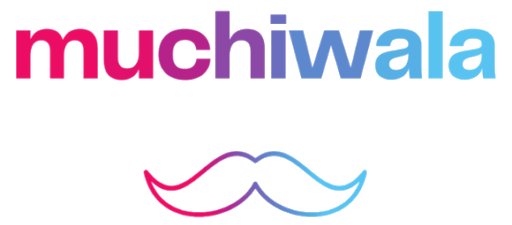How To Send WhatsApp Bulk Messages in 2024
What are Bulk WhatsApp messages?
To send WhatsApp bulk messages, you need to understand, what are bulk WhatsApp messages and how they can be useful in business.
Bulk WhatsApp messages refer to sending a large number of messages to multiple recipients. This is often used by businesses and organizations for purposes such as marketing, notifications, customer service, and communication with a large audience. Here are some key points on how to send bulk WhatsApp messages:
- Marketing and Promotions:
Businesses use bulk messaging to promote products, services, or events to a wide audience efficiently.
- Notifications:
Companies can send alerts, reminders, and important updates to customers or employees.
- Customer Engagement:
Helps maintain direct and personalized communication with customers, enhancing customer service and support.
- Automated Messaging:
Often, businesses use automated systems or third-party services to schedule and send WhatsApp Bulk Messages.
- Compliance and Opt-in:
It’s important to comply with WhatsApp’s policies and ensure that recipients have opted in to receive messages to avoid spam and legal issues.
- Personalization:
Messages can be personalized with the recipient’s name or other details to increase engagement and response rates.
- Multimedia Support:
Bulk messages can include text, images, videos, and documents, making them versatile for various types of communication.
- Delivery Reports:
Many bulk messaging services provide delivery reports and analytics to track the success of the campaigns.
How is WhatsApp Messaging important for Business?
Several businesses are promoting their operations online and dig up different & unique methods to take their business one step ahead into a successful future. WhatsApp messaging has become a vital tool for businesses due to its widespread usage, accessibility, and robust feature set. By leveraging WhatsApp, businesses can enhance direct communication, reach a larger audience, personalized engagement, support from rich media, secure conversation, global accessibility, integration & automation, and group messaging, ultimately leading to improved customer satisfaction and business growth.
What is Whatsapp Business API?
WhatsApp Business API (Application Programming Interface) is a powerful tool designed to help medium and large businesses communicate with their customers on a large scale using the popular messaging platform, WhatsApp. Unlike the regular WhatsApp Business App intended for small businesses, the API is geared toward enabling more complex integrations, automation, and large-scale customer interactions. This tool is used for businesses looking to enhance their customer communication, streamline operations, and leverage the widespread use of WhatsApp. By integrating this API into their customer service and marketing strategies, businesses can achieve:
- Higher engagement,
- Improved customer satisfaction, and
- Significant operational efficiencies.
How is WhatsApp Business API useful?
Whatsapp Business API is a robust tool for businesses that are engaged and committed to communication links created between their operations and targeted audiences. Here’s a detailed breakdown as to how WhatsApp Business API is useful for businesses:
Enhanced Customer Engagement:
– Real-time Communication:
The API allows businesses to send and receive messages instantly, ensuring timely responses to customer inquiries.
– Personalized Interactions:
It supports rich media messages, including images, videos, and documents, making customer interactions more engaging and personalized.
Improved Customer Service
– Automation with Chatbots:
Integrate chatbots to handle common queries, freeing up human agents for more complex issues.
– 24/7 Availability:
Automated responses ensure that customer service is available around the clock, enhancing customer satisfaction.
Efficient Customer Management
– Integration with CRM Systems:
Sync with Customer Relationship Management (CRM) systems to maintain comprehensive customer profiles and histories.
– Broadcast Messaging:
Send out promotions, updates, or alerts to multiple customers simultaneously without the messages being perceived as spam.
Secure and Reliable Communication
– End-to-end Encryption:
Messages sent through WhatsApp are end-to-end encrypted, ensuring privacy and security.
– Verified Business Profiles:
Establish trust with customers by having a verified business profile that displays important information like business hours and website.
Cost-Effective Solution
– Reduced Communication Costs:
Lower costs compared to traditional SMS or email marketing, especially for businesses with a global customer base.
How and where to start with WhatsApp Business API.
Understand the Requirements
Have clear business details, including name, address, and website. Use a valid phone number for the WhatsApp Business account, ideally a dedicated business line.
Choose an API Provider
Decide whether to integrate directly with WhatsApp or use a third-party provider for easier setup and additional features. Compare features, pricing, and support services offered by different providers.
Apply for WhatsApp Business API
Apply through the chosen provider or Facebook’s WhatsApp Business API application page. Complete the business verification process, including documentation and business information.
Set Up API Integration
Set up a development environment to test the API integration. Refer to WhatsApp Business API documentation for guidelines on integration, message templates, and error handling.
Develop and Test
Develop standardized message templates for frequent communications like greetings, updates, and FAQs. Conduct thorough testing to ensure that messages are sent and received correctly and that automation features work as intended.
Launch and Monitor
Once testing is complete and the integration is stable, launch the service. Continuously monitor message delivery rates, response times, and customer interactions to identify areas for improvement.
How to Send WhatsApp Bulk Messages?
To send WhatsApp bulk messages can be a powerful tool for businesses to communicate with their customers, but it must be done carefully to overcome WhatsApp’s policies and to ensure the messages are effective and well-received.
Steps to Send WhatsApp Bulk Messages:
Step 1: Building Your Contact List
- Use sign-up forms, lead magnets, and other methods to collect phone numbers. Ensure you have clear permission to send WhatsApp bulk messages.
- Segment your contact list based on different criteria like location, purchase history, or engagement level to personalize your messages effectively.
Step 2: Crafting Effective Messages
- Personalize your messages with the person’s name and other information required. Personalized messages have higher engagement rates.
- Always remember to keep your messages short, clear, and at the point. Avoid long paragraphs and use bullet points if necessary.
- Include a clear call to action (CTA) that tells recipients what you want them to do next, whether it’s visiting a website, making a purchase, or replying to your message.
- Additionally, the usage of more images, videos, and other multimedia makes your messages more engaging.
Step 3: Sending Bulk Messages
- Segment your audience to send targeted messages. This can help improve engagement and reduce the likelihood of being marked as spam.
- Schedule your messages to be sent at optimal times when your audience is most likely to be active.
- Before you send WhatsApp bulk messages, test it with a smaller group to ensure everything works as expected and to gather initial feedback.
Step 4: Monitoring and Analytics
- Use the analytics tools provided by your BSP (Business Service Provider) to track message delivery, read rates, and responses.
- Gather and analyze feedback to understand how your messages are being received and to identify areas for improvement.
- Rephrasing your messaging strategy based on the analytics and feedback regularly.
- Experiment with different message formats, CTAs, and sending times to see what works best.
Tips to send WhatsApp bulk messages for business
Always prioritize the quality of your messages and respect your recipients’ preferences to maintain a positive relationship with your audience. Implement these tips to send WhatsApp bulk messages that are effective, engaging, and respectful of your audience’s preferences.
- Personalize your messages as required.
- Keep your messages short and highlight the key points.
- Ensure media is relevant to the message and include a clear call to action.
- Respect the privacy and preferences of the recipients.
- Send messages at a time when your audience is likely to be available and attentive.
- Maintain a professional tone and avoid using slang.
- Group your contacts into relevant categories to send more targeted messages.
- Monitor the performance of your messages and track feedback.
Conclusion
To Send WhatsApp Bulk messages, requires careful planning, adherence to policies, and the right tools. By following these steps and tips, you can effectively leverage WhatsApp to communicate with your audience, increase engagement, and drive business results. By leveraging the WhatsApp Business API, businesses can significantly enhance their customer communication, provide better service, and drive growth through efficient and personalized interactions.
LinkedIn Marketing Agency in Chennai
Introduction – LinkedIn Marketing Agency in Chennai
A path-breaking LinkedIn Marketing Plan is the best way to step forward and find new leads. LinkedIn is a social network connecting professionals from around the world in different industries or fields of business. It is considered the online version of a networking event that interests professional contacts to expand their boundaries, get a better/suitable job, stay updated on industrial trends, or directly connect with new people to exchange their innovative thoughts.

Muchiwala is a leading LinkedIn marketing Agency in Chennai, we provide various services to build brand relationships, and brand leadership, to generate leads, and we also conduct market research. Today, community building is best in Linkedin. Our team will help you target your ads on LinkedIn and make sure that they reach people of specific industries in different regions and create awareness for high-quality leads and prospects for our clients.
Table of Contents
Why is LinkedIn important?
As a social media platform, LinkedIn offers a number of unlimited benefits for professionals. It helps you to gather knowledge, find inspirational idols, build professional relationships, and even market yourself & your company. It can also help you build your career, and spread your story to people for them to get inspired by you & your company.
For increasing social engagements, many professionals find LinkedIn very beneficial and useful. It is one of the best platforms for job seekers, and entrepreneurs, to connect with other professionals and keep track of upcoming events and marketing trends. Some of the reasons why LinkedIn is important for professionals to grow their business in the future:
You Find a Mentor
It takes immense strength and research to find a good mentor. A good and professional mentor can change your perspective on struggles and issues you face in your personal as well as professional life. Sometimes you face a number of issues while you begin or build your career. This is one of the main reasons why LinkedIn is significant for professionals.
You find Managers and Job Recruiters of various industries
With the help of LinkedIn, you are able to find a job faster because most recruiters and hiring managers of different industries from various parts of the world are already using this platform. LinkedIn has made it easier for a number of recruiters to find candidates during the hiring process that might be suitable for the required position and their company.
To gain a huge number of people to know about your company or business, a strong and presentable profile with a sensible and well-written summary of what you do or the past experiences of your work journey, will definitely boost the engagement rate.
A Good Profile builds Credibility and Trust
A well-summarised profile builds you as a trustworthy potential employee, which helps you to gain credibility. A recruiter scans through your profile before contacting you, and when they do, LinkedIn notifies you about it and gives you insights as to how many people viewed your profile.
You have Great Networking Opportunities with Professionals
LinkedIn gives you a great opportunity to meet other professionals of similar or different industries. If you want to switch your job, the network connections with other professionals will be useful even if you are currently working at some other company.
These network connections can be saved and can be accessed whenever you are in need of a new job role. You can also save the profiles that you find interesting and might be helpful for business expansion.
Industry knowledge updates daily
LinkedIn makes it easier for people to stay on top of industry trends and news. You can follow people and increase your knowledge of the latest information on what is happening in the industry. In this way, you learn about the latest changes that the industry is going through in the future.
A Great Way of Being Found on Google
LinkedIn helps the industry to rank at a better position in Google’s search engine research page (SERP). Google gives an opportunity to people and their LinkedIn profiles to rank well and there is a good chance that your profile can be seen on the Google results page. This means that LinkedIn is a great way for people or recruiters to look up jobs and businesses, and also know about the industry and their services.
Specialized services offered by LinkedIn Marketing Agency in Chennai
Your LinkedIn profile and company page are important to your professional branding strategy. Are you stressed that your profile is not as inviting as it should be?
Then, It’s time to rebuild your fluctuating LinkedIn profile into a gripping medium that increases brand awareness, generates more qualified leads for your business, and boosts sales. With our LinkedIn Services, we create a 100% professional profile that connects your network, constructs your brand, and motivates you to achieve your goals.
Personalized InMails
Increase click-through rates and drive conversions. With the help of our Sponsored InMail Services, you can send personalized messages to your target audiences. Our emails have captivating content with unique presentations to catch the attention of the targeted audiences.
Run Compelling LinkedIn Ads
With our services, you can run your marketing campaigns with clearly defined goals, target audiences, and maximum engagement with them. Our LinkedIn Text Ads and dynamic Video Ads are easy and accurate to the point. They offer a big opportunity to target audiences, check traffic to a specific URL, and can be personalized or customized.
LinkedIn Sponsored Ads
When it comes to LinkedIn feeds, a small tag of ‘Sponsered’ on top will be displayed. This includes an impressive combination of images, videos, text, and infographics. It becomes difficult at a point to take their eyes off these combinations and it helps to boost the rich media of advertising.
B2B Lead Generation
We create awareness to attract high-quality prospects or leads through LinkedIn. Our channelized efforts can harness LinkedIn’s total potential by targeting decision-makers and influencers based on specific industries, company size, or particular interest in functional topics. We develop strategies that, encourage you to find and engage with targeted prospects more effectively.
Prospect And List Building
Before making any marketing strategy, we narrow down leads or prospects, who are more likely to become customers. LinkedIn Sales Navigator helps you filter to narrow down users and directly target the top audience. You can focus on your leads and connect with them through comments and likes before converting them into your customers.
Multi-Platform Management
Our team handles LinkedIn campaigns across multiple platforms, such as Facebook, Twitter, and Instagram, to reach potential audiences and increase your online visibility.
Reporting and Analysis
We provide tracking analytics and reports, such as engagement rates, click-through rates, and conversion rates, allowing you to measure the increase in LinkedIn campaigns and online engagement with potential audiences for decisions to be taken to maintain maximum performance.
Why choose Muchiwala?
Muchiwala aims to take care of every aspect of LinkedIn step-by-step, from giving your brand an impression to converting trusted followers to potential leads. Our team of LinkedIn experts focuses on promoting your brand and constructing a strong, reliable community through captivating call-to-action.
B2B Lead Generation Experts
We specialize in generating high-quality leads and developing strategies that, encourage you to find and engage with targeted prospects more effectively.
Time-saving strategies
Our team ensures an integrated marketing strategy from our sales experts to boost the process in no time to spare.
Approach-based ROI & budget
We take care of the budget & ROI of our Clients and also help in running profitable, and appropriate marketing & advertising campaigns.
Profile & Page Management
We have regular checks on your LinkedIn and Instagram Pages and note down the engagement growth every month including likes, comments, views, shares, etc.
Brand Strategy for high-quality leads
Our team has strong experience in brand building, we develop the best strategies that connect the right audience at the right time with the right communication through the right content.
Conclusion
Transform your digital visibility with our expert LinkedIn marketing services, where authentic brand building meets potential prospects or leads for a top-notch experience. LinkedIn Marketing Chennai by Muchiwala is your go-to guide for all the required LinkedIn profile-building and page development services according to your choices. One of the ultimate keys to driving your target audience to your LinkedIn profile is to increase leads, sales, and conversion.
Instagram Marketing Agency in Chennai
Introduction
Muchiwala, the leading Instagram marketing agency in Chennai, is dedicated to propelling your business to new heights. Our specialized focus is on strategic Instagram campaigns and dynamic platforms to enhance your brand’s online presence and drive significant growth in the future.
Table of Contents
Our customized approach ensures that your business shines amidst the digital clutter, captivating your audience and fostering meaningful connections. Committed to innovation and results-driven strategies, Muchiwala is your trusted partner for unlocking Instagram’s full potential to elevate your business. As the expert Instagram marketing agency in Chennai, we excel in:
- Generating leads and sales through tailored strategies.
- Maximize ROI.
- Promoting brand awareness.
Why is Instagram Marketing important?
Since companies find new ways to promote their business, Instagram has been a powerful marketing tool for businesses looking to expand their presence and product visibility. Eventually, Instagram is a highly visual platform, it’s a top-notch social media marketing tool for presenting cool, innovative, interesting, and beautiful products and services by various businesses from different companies and brands.
Industries such as fashion, food, travel, beauty, home decor, gardening, and events enjoy enormous success by adding Instagram engagement to their marketing plans. Businesses can connect with millennials through Instagram, and it’s powerful for marketing to Gen Z and other segments of the industries.
- Businesses can partner with influencers to build brand awareness.
- Hashtags can increase a business’s visibility on Instagram.
- Instagram helps businesses connect with their customers often.
- Instagram helps businesses optimize the power of mobiles.
- Instagram helps businesses keep a keen eye on their competitors.
- Instagram Advertisements are a way to find new customers for various businesses.
- Businesses can implement social media strategies through Instagram insights.
Specialized Services – Instagram Marketing Agency in Chennai
We have a dedicated Instagram marketing team and paid tools to set up and manage your campaigns for the best results. Learn more about our Instagram Marketing services offer:
Hashtags Research
We identify relatable, sensible, and popular hashtags to increase your reach of audiences on Instagram.
Audience Targeting
We offer audience targeting methods making sure your messages are seen and reached by the right demographics, increasing the chances of conversion and customer recognition.
Multi-Platform Management
Our team handles Instagram campaigns across multiple platforms, such as Facebook, Twitter, and LinkedIn, to reach potential audiences and increase your online visibility.
Strategic Content Creation
We develop relevant and strong content that is interactive to your target audience, including eye-catching graphics, connecting copy, and videos to gain audience engagement.
Performance Analysis
We provide tracking analytics and reports, such as engagement rates, click-through rates, and conversion rates, allowing you to measure the increase in Instagram campaigns and online engagement with potential audiences for decisions to be taken to maintain standard performance.
Instagram Ads Agency
We believe in running targeted advertising campaigns on Instagram to increase brand presence, drive website traffic, or generate leads and sales. We also offer to create interactive stories to connect with your followers and share promotions, highlighting stories or announcements.
Why choose Muchiwala for Instagram Marketing Agency in Chennai
Muchiwala is one of the Leading Performance Marketing Agencies in Chennai, we have helped many businesses to get better online brand presence through our best Instagram marketing services and we have a team of qualified Instagram marketers who have worked on several Instagram marketing campaigns and know how to grow Instagram profiles in a standardized manner and find results in no time to spare. Here’s why you should choose us for Instagram Marketing:
Increased Brand Visibility
Our services showcase your brand’s online visibility, making it more interactive to potential audiences across your Instagram.
Engaged Audience
We ensure connections with your audience, encouraging interactions, comments, shares, and likes that appreciate your brand and audience engagement.
Targeted Advertising
We provide audience targeting that has reached the most relevant demographics, optimizing your ad spend for maximum ROI.
Improved Customer Insights
Our Instagram campaigns provide valuable customer data and insights that help you understand their tastes & preferences, behaviors, and latest trends for better growth in the future.
Enhanced Reputation Management
We actively monitor and respond to customer feedback and comments, helping you manage your brand’s visibility.
Measurable Results
We provide actionable insights to refine strategies, achieve business goals, and help businesses measure Instagram insights that benefit them in better decision-making.
Conclusion
Transform your online and social visibility with our expert Instagram marketing services, where authentic trends meet functionality to develop a top-notch online experience. Instagram Marketing Chennai by Muchiwala is your go-to guide for all the required Instagram marketing and development services according to your choices. One of the ultimate keys to driving people to your Instagram account is to increase leads, sales, and conversions.
Website Development Agency in Chennai
Introduction
Muchiwala is one of the leading Website Development Agency in Chennai with target audiences from various industries and different fields of services.
Do you want to develop an impressive website for your business/brand? Are you looking for a website developers/designers team to redesign, develop, and optimize your website for great performance and user experience?
You are in the right place.
We are here to help you develop your business’s online visibility, by creating a gripping web development. If your business is online, then, the website is your business’s core task to be done. Your website is an official platform to show people what you do and how you can benefit them & their company.
Table of Contents
Our Specialized Website Services
Muchiwala is one of the leading digital marketing agencies in Chennai. We offer various digital marketing services like Website development, Search Engine Optimization(SEO), Web designing, Social Media Marketing, Content Marketing, Paid Advertising Services, etc. Our website designing/developing services include:
Customized & Unique Design
We design a unique and tailored website that matches your brand’s identity, ensuring, an increase in online visibility that puts you ahead of your competitors.
Website Design & Development from Scratch
We design and develop your website from scratch following step-by-step procedures. At first, our team will conduct research and note down what will required to make your website engaging to the audiences.
Responsive Mobile Optimized Website development
Our designs are developed for various devices and sizes of the screen, making the accessibility of your website easier on different devices of every dimension.
Ease of access and Navigability
We prioritize user experience, and navigation implementation, and also to guide the audiences through your website with maximum interaction and engagement.
Search Engine Optimized Design Structure
Our website designs include best practices of SEO, making your site search engine friendly, which helps to increase your online visibility & helps to gain more organic traffic.
WordPress Website Designing
We use WordPress Framework for all our website development projects. The framework makes the site easy to edit, update, add content, and change animations/effects.
E-commerce Website development
We have served clients of various brands and industries across all different fields of business. We’ve developed and helped clients increase their online presence with an engaging and interactive audience.
Why choose us?
Best Website Development Agency in Chennai
Strong Brand Image
Custom designs enhance your brand’s online presence.
User-Friendly
User-friendly designs with navigation and high-responsive layouts, ensure the audiences have a smooth and enjoyable search engine experience, increasing engagement with them and reducing the bounce rates.
Higher Conversions
Well-developed websites are optimized for high conversions, encouraging the audience to take actions such as making any purchases, filling out contact details required, or signing up for any newsletters or blogs, which helps lead to high conversion rates.
Mobile Compatibility
Our designs ensure that your website is easily accessible and functional on all devices at all times, reaching a huge group of audience and growing mobile optimization.
Improved SEO
SEO-friendly designs help improve your website’s search engine rankings, gain organic traffic, and make it easier for potential audiences to visit your site.
Competitive Edge
A fully functional website gives you a competitive advantage, which helps you to stand out in the cluttered digital landscape and position your company as the top in your industry.
Conclusion
Transform your digital visibility with our expert website developing services, where authentic designs meet functionality to develop a top-notch online experience. Web Development Chennai by Muchiwala is your go-to guide for all the required website design and development services according to your choices. One of the ultimate keys to driving people to your website is to increase leads, sales, and conversions.
Digital Marketing Agency in Chennai
Introduction – About Us
Muchiwala is a Leading Digital Marketing Agency in Chennai, which delivers exceptional results, and data-driven methods, driving growth strategies and ROI in Digital Marketing. In the 21st century, everything around the world is growing digitally, be it business, education, bills, etc. Traditional marketing is used at a minimal rate, compared to digital marketing, which helps reach the business at a scale of great heights. Muchiwala offers Fresh Ideas for Every Business:
- Creative Approach
Innovative thinking increases our creative approach toward delivering exceptional marketing solutions for businesses.
- Guaranteed Success
Our methods ensure success which is guaranteed and sustainable.
- Performance Oriented
Our performance-oriented procedure consistently delivers outstanding results for our clients.
Table of Contents
Specialized Services under Digital Marketing Agency in Chennai
SEO Optimization
Beat your competitor and stay at the top of Google with our targeted, affordable, and result-oriented SEO strategy.
- SEO Consultancy Services
- Local SEO Services
- Global SEO Services
- Keyword Research Analysis
- Effective Link Building Services
Social Media Marketing
Change your brand stories into business performance using Social Media, laser-targeting, clicks to conversions, closing sales, and more to increase social media visibility.
- Social media strategy development
- Content creation
- Social media advertising
- Social media management
Content Marketing
Curate content that connects customers with your brand. Every piece of content has emotional triggers that drive people to make driving decisions.
- Article Writing
- Blog Writing
- E-commerce Content Writing
- SEO Content Writing Services
- Information Portals
- Landing Page Writing
- Travel Writing Services
- Website Content Writing Services
- Product Description Writing
- Guest Posting
- Video & Audio Content
- Social Media Writing
Pay Per Click
Every click matters. We help in the conversion of these clicks into sales by designing powerful adverts and optimizing the campaigns to their maximum targets.
- Competitive research
- Improved ROI
- Affordable cost
- Conversion tracking
- Real-time reports
- Landing Page Creation and maintenance
- Ad Campaign setup
- Copyrighted Ad creation
- Best Bid Management within your budget
- Continuous testing and improving
- Online support
- Weekly performance report
B2B Lead Generation
Utilize our marketing expertise to build your brand & generate B2B leads. Send emails to appreciate your ROI by building a loyal target audience. Our services take, the lead generation burden off so that you can focus on closing deals.
- Customized Email Campaigns
- Targeted LinkedIn Outreach
- Lead Nurturing
- Reporting and Analytics
Whatsapp Marketing
In an era of instant communication, reaching your B2B leads through WhatsApp can be a game-changer. Our WhatsApp outreach service is designed to engage your prospects where they’re most active.
- Personalized Whatsapp Campaigns
- Quick Response Handling
- Lead Tracking and Reporting
- Compliance With Messaging Solutions
Why Muchiwala? Best Digital Marketing Agency in Chennai
To succeed online, a well-developed & designed website is not enough, you need appropriate marketing strategies that will help you grow in the future. Whether you like the spotlight or not, it is an important phase to grab the attention of the audience.
At Muchiwala, we’re like digital wizards. We know all the techniques & tricks to make your website or business sparkle online. Here’s what we do: First, we get to know your business, your website, your target audience, and your goals. Based on this, we have the best plan for you.
We are just here to help you, get more people to look at your website. We focus on two things: originality and paid traffic. We use tools like SEO, PPC, and digital ads to help your business reach out to people and speak to them about your brand, in making sure, that everyone knows your story.
- Proven Process
We have a process, that is proven to be the best to run marketing campaigns based on your needs.
- Dedicated Teams
We have a dedicated team for Paid Ads, Social Media, and Website Development services.
- Profitable Campaigns – ROI Driven
We help in running profitable, effective, and appropriate marketing & advertising campaigns.
3 M Formula
Market
Selecting the target markets or audiences, the different target markets that match any particular product or service. So for each product, we make a list of four or five targeted or competitive market segments.
Message
Secondly, for each market segment, we decide on the marketing message, the heart of the message, keywords, etc. It’s possible that for the same product, we need different messages for different market segments.
Medium
Considering the most appropriate medium, or media, to convey each message to its target audience.Delivering relentless growth to brands with our revolutionary digital marketing strategies that drive traffic, clicks, and potential customers.
Conclusion
Harnessing the power of digital marketing to transform your business to great heights. Partner with Muchiwala, the Leading Performance Marketing Agency in Chennai, and unlock your online presence. Our range of services, exceptional strategies, and expert team will ensure that your brand stands out the best in the digital world.
Measuring Success in Digital PR
Introduction:
Digital PR is using an online platform to build brand awareness, enhance reputation, and establish strong connections with target audience. It involves communication methods 7 procedures designed to improve an organization’s reputation by leveraging online channels.
Typical activities include:
- Media outreach
- Press release creation and distribution
- Event planning and promotion
- Sponsorship opportunities
- Crisis communication
- Publicity stunts (attention-grabbing tactics)
- Influencer partnerships
Unlike traditional PR, where success might be measured by media mentions or column inches, digital PR requires a more nuanced approach. This article will delve into the key metrics and analytics tools used to measure the effectiveness of digital PR campaigns, providing insights into how to gauge success in the digital realm.
Key Metrics:
Web Traffic and Referral Sources:
One of the fundamental metrics in digital PR is web traffic. Analyzing the volume of visitors to your website and identifying the sources of referral traffic can provide valuable insights into the effectiveness of your PR efforts. Tools like Google Analytics enable you to track traffic sources, allowing you to assess which PR channels are driving the most visitors to your site.
Backlinks and Domain Authority:
Backlinks are crucial in digital PR as they not only drive traffic but also signal authority and credibility to search engines. Monitoring the number and quality of backlinks generated from PR campaigns can indicate the success of your outreach efforts. Additionally, assessing the domain authority of referring sites provides context on the impact of your PR placements.
Social Media Engagement:
Social media platforms play a significant role in digital PR, serving as channels for content distribution and audience engagement. Metrics such as likes, shares, comments, and retweets can gauge the level of engagement generated by PR content. Analyzing social media metrics allows you to evaluate the reach and resonance of your PR messages within your target audience.
Brand Mentions and Sentiment Analysis:
Monitoring brand mentions across digital channels provides insights into brand visibility and sentiment. Tools like Mention or Brandwatch enable you to track mentions of your brand or relevant keywords, allowing you to assess the overall sentiment surrounding your brand online. Positive sentiment indicates successful PR efforts, while negative sentiment may signal areas for improvement or reputation management.
Conversion Rates and Goal Completion:
Ultimately, the success of digital PR should be tied to business outcomes. Tracking conversion rates and goal completions, such as form submissions, downloads, or purchases, attributable to PR campaigns is essential for demonstrating ROI. By aligning PR objectives with measurable actions, you can demonstrate the tangible impact of your efforts on business growth.
Analytics Tools:
Google Analytics:
As a comprehensive web analytics platform, Google Analytics offers a wealth of data for measuring digital PR success. Features such as traffic sources, goal tracking, and behavior analysis provide insights into audience behavior and campaign performance.
SEMrush:
SEMrush is a versatile tool that offers capabilities for keyword research, competitor analysis, and backlink monitoring. Its backlink analytics feature allows you to track the quantity and quality of backlinks generated from PR activities, aiding in link building efforts and SEO optimization.
Hootsuite:
Hootsuite is a social media management platform that enables you to schedule posts, engage with audiences, and analyze social media performance. Its analytics dashboard provides metrics on engagement, reach, and audience demographics across various social networks.
Meltwater:
Meltwater is a media intelligence platform that offers media monitoring, social listening, and sentiment analysis tools. It allows you to track brand mentions, analyze media coverage, and measure the impact of PR campaigns in real-time.
Sprout Social:
Sprout Social is another social media management platform that provides robust analytics capabilities. Its reporting features offer insights into social media performance, audience engagement, and campaign effectiveness, helping you optimize your PR strategies.
Conclusion:
Measuring success in digital PR requires a multifaceted approach, encompassing various metrics and analytics tools. By tracking key metrics such as web traffic, backlinks, social media engagement, brand mentions, and conversion rates, and utilizing analytics tools like Google Analytics, SEMrush, Hootsuite, Meltwater, and Sprout Social, PR professionals can effectively evaluate the impact of their campaigns and demonstrate tangible results to stakeholders. In an increasingly digital world, the ability to measure and analyze PR performance is essential for driving business outcomes and maintaining competitive advantage.
Harnessing the Power of Color Theory in Graphic Design for Marketing Success
Introduction:
Color is one of the most powerful elements in graphic design, capable of evoking emotions, influencing perceptions, and driving actions. In the realm of digital marketing, understanding and effectively applying color theory can significantly impact the success of your campaigns. In this blog post, we’ll explore the principles of color theory in graphic design and provide actionable insights into how businesses can harness the power of color to achieve marketing success.
Understanding Color Theory:
Color theory is the study of how colors interact with each other and how they are perceived by viewers. It involves principles such as hue, saturation, value, contrast, and harmony. By understanding these principles, graphic designers can create visually appealing compositions that resonate with their audience and convey the intended message effectively.
The Psychological Impact of Color:
Colors have the power to evoke specific emotions and associations in viewers. For example:
- Red:
Often associated with passion, energy, and excitement. It can stimulate appetite and create a sense of urgency, making it suitable for calls to action or promotions.
- Blue:
Evokes feelings of trust, stability, and professionalism. It’s commonly used by businesses to convey reliability and credibility.
- Yellow:
Represents optimism, warmth, and happiness. It can grab attention and convey a sense of cheerfulness.
- Green:
Symbolizes nature, growth, and freshness. It’s often used in eco-friendly or sustainable brands.
- Purple:
Associated with luxury, sophistication, and creativity. It can convey a sense of elegance and exclusivity.
Understanding the psychological impact of colors allows marketers to strategically choose colors that align with their brand identity and evoke the desired emotional response from their audience.
Applying Color Theory in Graphic Design:
When applying color theory in graphic design for marketing purposes, consider the following tips:
- Know Your Audience: Understand the demographics, preferences, and cultural associations of your target audience. Choose colors that resonate with them and align with their expectations.
- Create Contrast: Use contrasting colors to create visual interest and draw attention to key elements such as headlines, calls to action, or product features. Contrast can enhance readability and make your designs more dynamic.
- Maintain Consistency: Establish a consistent color palette that reflects your brand identity and use it across all your marketing materials, including your website, social media, advertising, and packaging. Consistency fosters brand recognition and reinforces your brand’s personality.
- Consider Color Psychology: Choose colors that convey the desired mood or message of your marketing campaign. For example, calming colors like blue or green may be suitable for wellness products, while vibrant colors like orange or yellow may be more appropriate for youth-oriented brands.
- Test and Iterate: Continuously test different color combinations and monitor their impact on audience engagement, click-through rates, and conversions. Use A/B testing to compare the performance of different color schemes and refine your designs based on data-driven insights.
Conclusion:
In conclusion, color theory is a powerful tool in graphic design that can have a significant impact on the success of your marketing efforts. By understanding the psychological effects of colors and applying principles of color theory in your designs, you can create visually compelling compositions that resonate with your audience, convey your brand message effectively, and drive desired actions. Whether it’s choosing the right color palette, creating contrast, or considering color psychology, harnessing the power of color can elevate your marketing materials and help you stand out in a crowded digital landscape.
Branding Through Design
Branding Through Design: Building a Strong Visual Identity in Digital Marketing
Introduction:
In today’s competitive digital landscape, establishing a strong brand identity is essential for businesses looking to stand out and make a lasting impression on their target audience. A crucial component of building a brand identity is through design, as visuals play a significant role in shaping how a brand is perceived. In this blog post, we’ll explore the importance of branding through design in digital marketing and provide insights into how businesses can create a cohesive and compelling visual identity that resonates with their audience.
Understanding Brand Identity:
Brand identity encompasses the visual elements, messaging, and values that distinguish a brand from its competitors and create a unique identity in the minds of consumers. It includes elements such as logos, color palettes, typography, imagery, and brand voice, all of which work together to convey the personality, values, and essence of the brand.
The Role of Design in Branding:
Design plays a crucial role in shaping brand identity and perception. It helps businesses communicate their brand personality, establish credibility, evoke emotions, and create memorable experiences for their audience. Whether it’s a logo, website, social media graphics, packaging, or advertising collateral, every visual touchpoint contributes to how a brand is perceived by consumers.
Building a Strong Visual Identity by Branding Through Design:
Creating a strong visual identity involves several key steps:
- Define Your Brand Personality: Start by defining your brand personality and values. What is your brand’s mission, vision, and core values? How do you want your audience to perceive your brand? This will serve as the foundation for your visual identity.
- Develop Brand Elements: Identify and develop key brand elements such as logos, color palettes, typography, and imagery. These elements should be consistent across all your marketing channels and reflect your brand personality and values.
- Create a Style Guide: Develop a brand style guide that outlines the rules and guidelines for using your brand elements consistently. This includes specifications for logo usage, color codes, typography guidelines, and imagery styles. A style guide ensures consistency and coherence in your brand’s visual identity across different platforms and mediums.
- Design Consistent Brand Assets: Use your brand elements to design consistent brand assets across all your digital marketing channels, including your website, social media profiles, email campaigns, and advertising materials. Consistency is key to reinforcing brand recognition and building trust with your audience.
- Tell Your Brand Story: Use design to tell your brand story and connect with your audience on an emotional level. Incorporate visuals that reflect your brand’s values, mission, and unique selling propositions. Whether it’s through imagery, illustrations, or video content, storytelling can help create a deeper connection with your audience.
Conclusion:
In conclusion, branding through design is a powerful strategy for building a strong visual identity and establishing a memorable presence in the digital space. By defining your brand personality, developing cohesive brand elements, and consistently applying them across all your marketing channels, you can create a distinctive brand identity that resonates with your audience and fosters brand loyalty. Investing in design not only enhances the aesthetic appeal of your brand but also reinforces brand recognition, credibility, and trust, ultimately driving long-term success in the digital marketplace.
On-Page SEO Best Practices
On-Page SEO Best Practices: Optimizing Your Website for Search Engines
Introduction:
In the world of search engine optimization (SEO), on-page optimization plays a critical role in determining the visibility and ranking of your website in search engine results pages (SERPs). On-page SEO involves optimizing individual web pages to improve their relevance, authority, and overall performance in search engine rankings. In this blog post, we’ll explore the essential on-page SEO best practices that can help you optimize your website effectively and boost your organic search traffic.
Understanding On-Page SEO:
On-page SEO encompasses various techniques and strategies aimed at optimizing elements directly within your website’s pages to make them more search engine-friendly. This includes optimizing meta tags, content, internal linking, and technical aspects such as site speed and mobile-friendliness. By focusing on on-page optimization, you can improve your website’s visibility, attract more targeted traffic, and ultimately achieve higher rankings in search engine results.
Essential On-Page SEO Best Practices:
- Keyword Research and Optimization:
- Conduct thorough keyword research to identify relevant keywords and phrases that your target audience is searching for.
- Optimize your page titles, meta descriptions, headings, and content with targeted keywords to improve relevance and visibility.
- Use long-tail keywords and semantic variations to capture a wider range of search queries and attract more qualified traffic.
- High-Quality and Relevant Content:
- Create high-quality, informative, and engaging content that addresses the needs and interests of your target audience.
- Ensure that your content is well-structured, easy to read, and optimized for readability and comprehension.
- Incorporate targeted keywords naturally throughout your content, avoiding keyword stuffing or over-optimization.
- Optimized Meta Tags:
- Craft compelling and descriptive meta titles and meta descriptions that accurately reflect the content of your web pages.
- Keep meta titles under 60 characters and meta descriptions under 160 characters to ensure they display effectively in search results.
- Include relevant keywords in your meta tags to improve visibility and click-through rates.
- Optimized URL Structure:
- Use descriptive and SEO-friendly URLs that clearly convey the content and topic of your web pages.
- Include targeted keywords in your URLs, separating words with hyphens for readability and SEO benefit.
- Avoid using unnecessary parameters or dynamic URLs that can confuse search engines and users.
- Internal Linking and Site Structure:
- Implement a logical and organized site structure with clear navigation and hierarchical categories.
- Use internal linking to connect related pages within your website and distribute link equity throughout your site.
- Optimize anchor text for internal links to provide context and relevance to both users and search engines.
- Optimized Images and Multimedia:
- Optimize images for SEO by using descriptive file names, alt text, and captions that include relevant keywords.
- Compress images to reduce file size and improve page load times, enhancing user experience and SEO performance.
- Utilize image sitemaps and structured data markup to provide additional context to search engines and improve image search visibility.
- Mobile-Friendly and Responsive Design:
- Ensure that your website is optimized for mobile devices and provides a seamless user experience across all screen sizes.
- Use responsive design techniques to adapt your site’s layout and content dynamically based on the user’s device and viewport.
- Test your website’s mobile-friendliness using Google’s Mobile-Friendly Test and address any issues to improve search rankings and user satisfaction.
- Page Speed Optimization:
- Optimize your website’s loading speed by minimizing server response times, leveraging browser caching, and reducing unnecessary code and scripts.
- Compress CSS, JavaScript, and HTML files to reduce file sizes and improve page load times, enhancing user experience and SEO performance.
- Utilize tools like Google PageSpeed Insights and GTmetrix to identify and address performance issues that may impact search rankings and user engagement.
Conclusion:
On-page SEO is a fundamental aspect of optimizing your website for search engines and improving your organic search visibility. By implementing these on-page SEO best practices, you can enhance the relevance, authority, and overall performance of your web pages, leading to higher rankings, increased organic traffic, and improved user engagement. By focusing on optimizing individual elements within your website, you can create a strong foundation for SEO success and achieve your business goals in the competitive online landscape.
Social Media Crisis Management
Social Media Crisis Management: Strategies for Handling Negative Feedback
Introduction:
In today’s digital age, social media has become a powerful tool for businesses to connect with their audience, build brand awareness, and drive engagement. However, with this increased visibility comes the risk of encountering negative feedback and facing potential social media crises. In this blog post, we’ll explore the importance of effective social media crisis management and provide strategies for handling negative feedback to protect your brand’s reputation and maintain customer trust.
Understanding Social Media Crises:
A social media crisis can arise when negative feedback, complaints, or controversies escalate on social media platforms, potentially causing reputational damage and impacting a company’s bottom line. These crises can stem from various sources, including product defects, poor customer service experiences, offensive content, or mishandled PR incidents. Regardless of the cause, how a brand responds to these crises can significantly impact the outcome and public perception.
Strategies for Handling Negative Feedback:
- Monitor Conversations:
- Proactively monitor social media platforms for mentions of your brand, products, or key stakeholders. Use social media listening tools to track conversations, sentiment, and emerging issues in real-time. By staying vigilant, you can identify potential crises early and respond promptly before they escalate.
- Acknowledge and Apologize:
- When negative feedback arises, acknowledge the issue publicly and express genuine empathy and concern for the affected individuals. Apologize for any inconvenience or dissatisfaction experienced and assure customers that their concerns are being taken seriously. A prompt and sincere apology can help defuse tensions and demonstrate accountability.
- Take the Conversation Offline:
- Encourage individuals with unresolved issues or complaints to contact you directly through private messages, email, or phone. Handling sensitive matters privately allows for more personalized communication and enables you to address concerns more effectively without escalating the situation publicly.
- Provide Transparent Updates:
- Keep your audience informed throughout the crisis by providing transparent updates on the situation, actions taken, and resolutions achieved. Transparency builds trust and reassures stakeholders that you are actively addressing the issue and working towards a resolution.
- Stay Calm and Professional:
- In the face of negative feedback or criticism, it’s essential to remain calm, composed, and professional in your responses. Avoid engaging in heated arguments or exchanging negative comments with individuals online. Respond courteously and professionally, maintaining a positive tone and demeanor.
- Offer Solutions and Compensation:
- Whenever possible, offer practical solutions or compensatory measures to resolve the issue and mitigate any negative impact on affected individuals. This may include offering refunds, replacements, discounts, or other forms of restitution to demonstrate goodwill and resolve customer grievances.
- Educate and Inform:
- Use social media crises as an opportunity to educate your audience, clarify misconceptions, and provide accurate information about your products, services, or company policies. Address common concerns, provide context, and offer insights to help alleviate uncertainties and restore confidence.
- Learn and Improve:
- After resolving a social media crisis, conduct a thorough post-mortem analysis to evaluate what went wrong, what worked well, and what lessons can be learned for the future. Use insights gained from the crisis management process to identify areas for improvement, update policies and procedures, and enhance preparedness for future crises.
Conclusion:
In conclusion, effective social media crisis management is essential for protecting your brand’s reputation, maintaining customer trust, and mitigating the impact of negative feedback or controversies. By implementing proactive monitoring, prompt responses, transparency, and professionalism, you can navigate social media crises with confidence and resilience. Remember that how you handle negative feedback speaks volumes about your brand’s values, integrity, and commitment to customer satisfaction. By following the strategies outlined in this blog post, you can turn social media crises into opportunities for growth, resilience, and positive brand reputation management.










